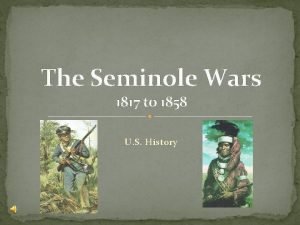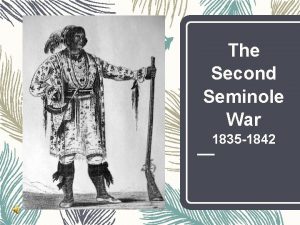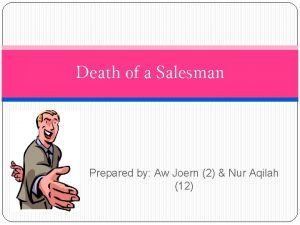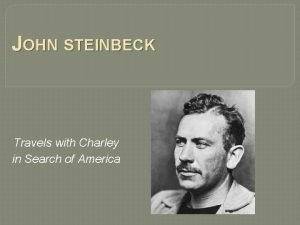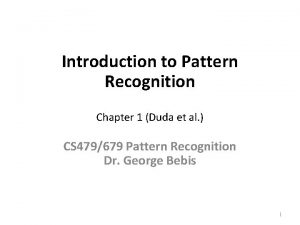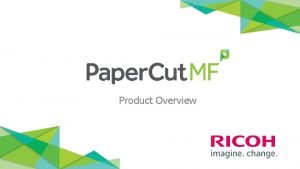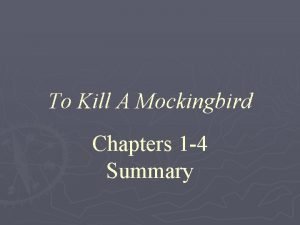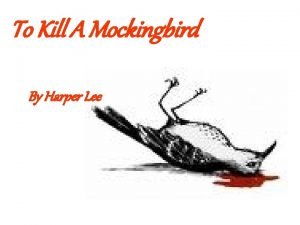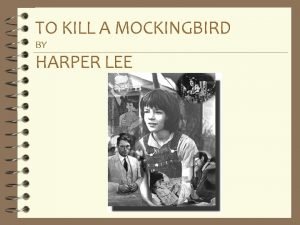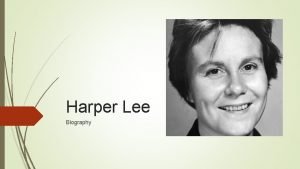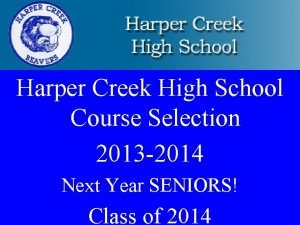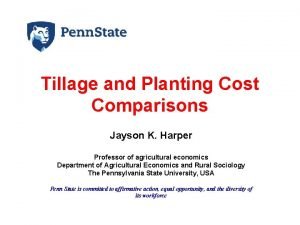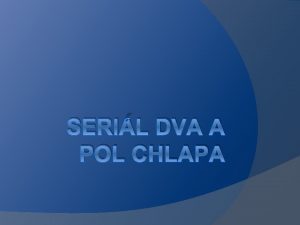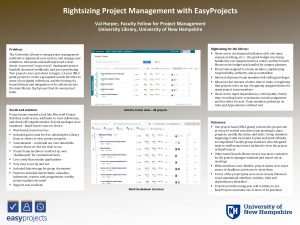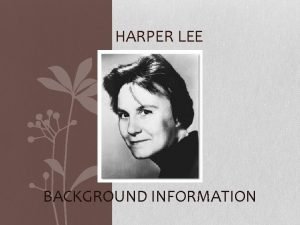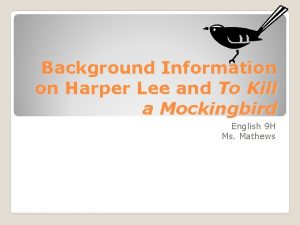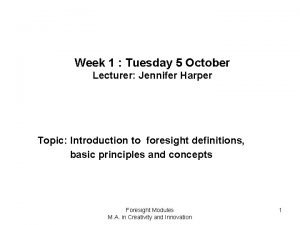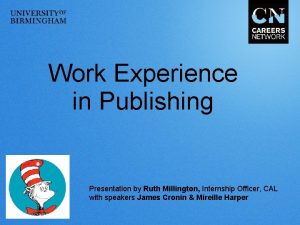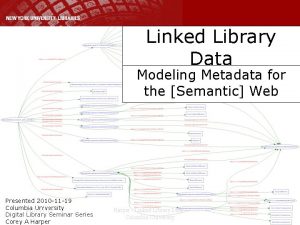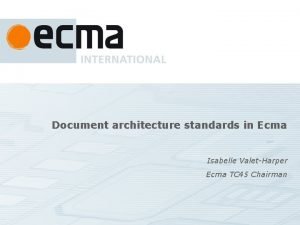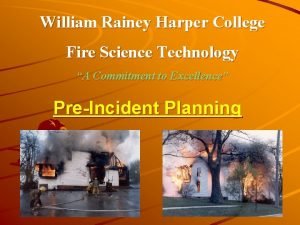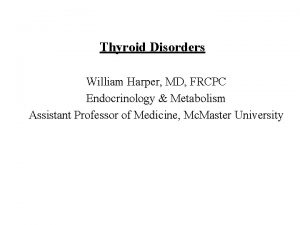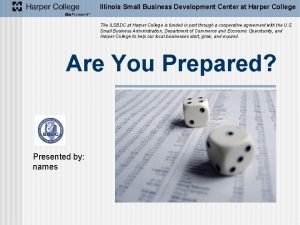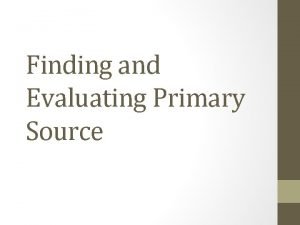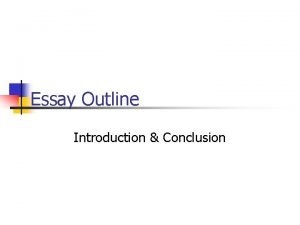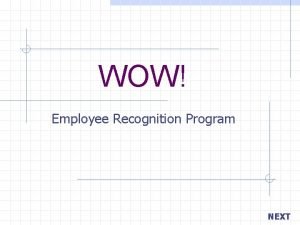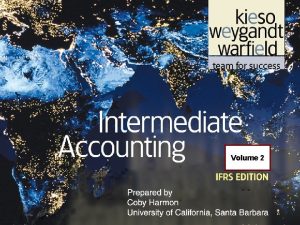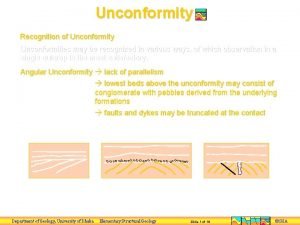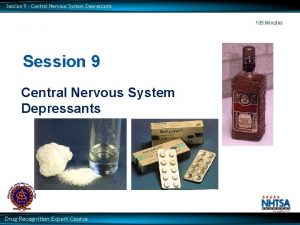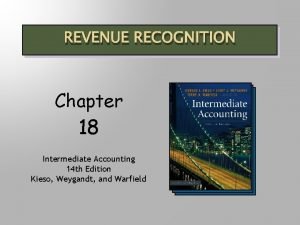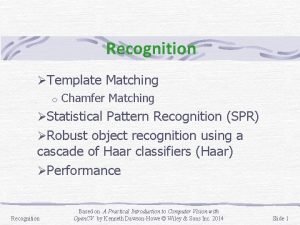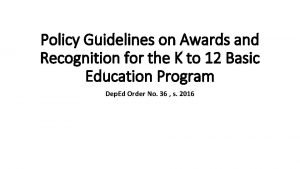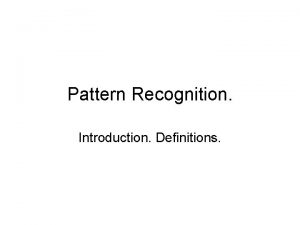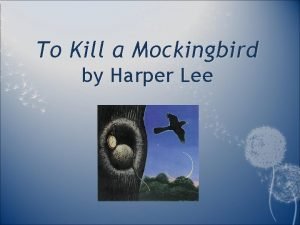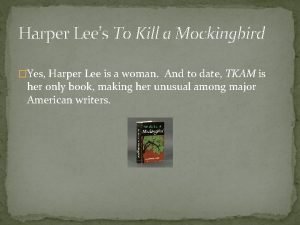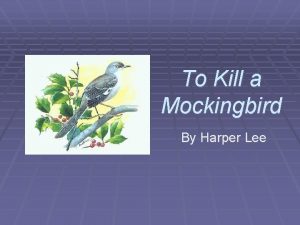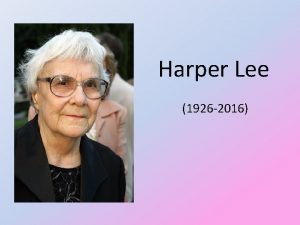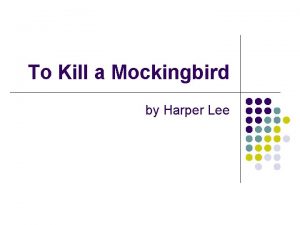Introduction to recognition Source Charley Harper Outline Overview



























































- Slides: 59

Introduction to recognition Source: Charley Harper

Outline • Overview of recognition tasks • A statistical learning approach • “Classic” or “shallow” recognition pipeline • • “Bag of features” representation Classifiers: nearest neighbor, linear, SVM • After that: neural networks, “deep” recognition pipeline

Common recognition tasks Adapted from Fei-Fei Li

Image classification and tagging • outdoor • mountains • city • Asia • Lhasa • … Adapted from Fei-Fei Li

Object detection • find pedestrians Adapted from Fei-Fei Li

Activity recognition • walking • shopping • rolling a cart • sitting • talking • … Adapted from Fei-Fei Li

Semantic segmentation Adapted from Fei-Fei Li

Semantic segmentation sky mountain building tree building lamp umbrella person market stall person ground Adapted from Fei-Fei Li

Detection, semantic segmentation, instance segmentation image classification semantic segmentation object detection instance segmentation Image source

Image description This is a busy street in an Asian city. Mountains and a large palace or fortress loom in the background. In the foreground, we see colorful souvenir stalls and people walking around and shopping. One person in the lower left is pushing an empty cart, and a couple of people in the middle are sitting, possibly posing for a photograph. Adapted from Fei-Fei Li

Image classification

The statistical learning framework • Apply a prediction function to a feature representation of the image to get the desired output: f( f( f( ) = “apple” ) = “tomato” ) = “cow”

The statistical learning framework y = f(x) output prediction function feature representation • Training: given a training set of labeled examples {(x 1, y 1), …, (x. N, y. N)}, estimate the prediction function f by minimizing the prediction error on the training set • Testing: apply f to a never before seen test example x and output the predicted value y = f(x)

Steps Training Labels Training Images Image Features Training Learned model Testing Image Features Test Image Prediction Slide credit: D. Hoiem

“Classic” recognition pipeline Image Pixels Feature representation Trainable classifier • Hand-crafted feature representation • Off-the-shelf trainable classifier Class label

“Classic” representation: Bag of features

Motivation 1: Part-based models Weber, Welling & Perona (2000), Fergus, Perona & Zisserman (2003)

Motivation 2: Texture models Texton histogram “Texton dictionary” Julesz, 1981; Cula & Dana, 2001; Leung & Malik 2001; Mori, Belongie & Malik, 2001; Schmid 2001; Varma & Zisserman, 2002, 2003; Lazebnik, Schmid & Ponce, 2003

Motivation 3: Bags of words • Orderless document representation: frequencies of words from a dictionary Salton & Mc. Gill (1983)

Motivation 3: Bags of words • Orderless document representation: frequencies of words from a dictionary Salton & Mc. Gill (1983) US Presidential Speeches Tag Cloud http: //chir. ag/projects/preztags/

Motivation 3: Bags of words • Orderless document representation: frequencies of words from a dictionary Salton & Mc. Gill (1983) US Presidential Speeches Tag Cloud http: //chir. ag/projects/preztags/

Motivation 3: Bags of words • Orderless document representation: frequencies of words from a dictionary Salton & Mc. Gill (1983) US Presidential Speeches Tag Cloud http: //chir. ag/projects/preztags/

Bag of features: Outline 1. 2. 3. 4. Extract local features Learn “visual vocabulary” Quantize local features using visual vocabulary Represent images by frequencies of “visual words”

1. Local feature extraction • Sample patches and extract descriptors

2. Learning the visual vocabulary … Extracted descriptors from the training set Slide credit: Josef Sivic

2. Learning the visual vocabulary … Clustering Slide credit: Josef Sivic

2. Learning the visual vocabulary … Visual vocabulary Clustering Slide credit: Josef Sivic

Recall: K-means clustering • Want to minimize sum of squared Euclidean distances between features xi and their nearest cluster centers mk Algorithm: • Randomly initialize K cluster centers • Iterate until convergence: • • Assign each feature to the nearest center Recompute each cluster center as the mean of all features assigned to it

Recall: Visual vocabularies … Appearance codebook Source: B. Leibe

Bag of features: Outline 1. 2. 3. 4. Extract local features Learn “visual vocabulary” Quantize local features using visual vocabulary Represent images by frequencies of “visual words”

Spatial pyramids level 0 Lazebnik, Schmid & Ponce (CVPR 2006)

Spatial pyramids level 0 level 1 Lazebnik, Schmid & Ponce (CVPR 2006)

Spatial pyramids level 0 level 1 Lazebnik, Schmid & Ponce (CVPR 2006) level 2

Spatial pyramids • Scene classification results

Spatial pyramids • Caltech 101 classification results

“Classic” recognition pipeline Image Pixels Feature representation Trainable classifier • Hand-crafted feature representation • Off-the-shelf trainable classifier Class label

Classifiers: Nearest neighbor Training examples from class 1 Test example Training examples from class 2 f(x) = label of the training example nearest to x All we need is a distance or similarity function for our inputs No training required!

Functions for comparing histograms • L 1 distance: • χ2 distance: • Quadratic distance (cross-bin distance): • Histogram intersection (similarity function):

K-nearest neighbor classifier • For a new point, find the k closest points from training data • Vote for class label with labels of the k points k=5

K-nearest neighbor classifier Which classifier is more robust to outliers? Credit: Andrej Karpathy, http: //cs 231 n. github. io/classification/

K-nearest neighbor classifier Credit: Andrej Karpathy, http: //cs 231 n. github. io/classification/

Linear classifiers Find a linear function to separate the classes: f(x) = sgn(w x + b)

Visualizing linear classifiers Source: Andrej Karpathy, http: //cs 231 n. github. io/linear-classify/

Nearest neighbor vs. linear classifiers • NN pros: • • Simple to implement Decision boundaries not necessarily linear Works for any number of classes Nonparametric method • NN cons: • Need good distance function • Slow at test time • Linear pros: • Low-dimensional parametric representation • Very fast at test time • Linear cons: • Works for two classes • How to train the linear function? • What if data is not linearly separable?

Linear classifiers • When the data is linearly separable, there may be more than one separator (hyperplane) Which separator is best?

Support vector machines • Find hyperplane that maximizes the margin between the positive and negative examples For support vectors, Distance between point and hyperplane: Therefore, the margin is 2 / ||w|| Support vectors Margin C. Burges, A Tutorial on Support Vector Machines for Pattern Recognition, Data Mining and Knowledge Discovery, 1998

Finding the maximum margin hyperplane 1. Maximize margin 2 / ||w|| 2. Correctly classify all training data: Quadratic optimization problem: C. Burges, A Tutorial on Support Vector Machines for Pattern Recognition, Data Mining and Knowledge Discovery, 1998

SVM parameter learning • Separable data: Maximize margin • Classify training data correctly Non-separable data: Maximize margin Minimize classification mistakes

SVM parameter learning +1 0 Margin -1 Demo: http: //cs. stanford. edu/people/karpathy/svmjs/demo

Nonlinear SVMs • General idea: the original input space can always be mapped to some higher-dimensional feature space where the training set is separable Φ: x → φ(x) Image source

Nonlinear SVMs • Linearly separable dataset in 1 D: x 0 • Non-separable dataset in 1 D: x 0 • We can map the data to a higher-dimensional space: x 2 0 x Slide credit: Andrew Moore

The kernel trick • General idea: the original input space can always be mapped to some higher-dimensional feature space where the training set is separable • The kernel trick: instead of explicitly computing the lifting transformation φ(x), define a kernel function K such that K(x , y) = φ(x) · φ(y) (to be valid, the kernel function must satisfy Mercer’s condition)

The kernel trick • Linear SVM decision function: learned weight Support vector C. Burges, A Tutorial on Support Vector Machines for Pattern Recognition, Data Mining and Knowledge Discovery, 1998

The kernel trick • Linear SVM decision function: • Kernel SVM decision function: • This gives a nonlinear decision boundary in the original feature space C. Burges, A Tutorial on Support Vector Machines for Pattern Recognition, Data Mining and Knowledge Discovery, 1998

Polynomial kernel:

Gaussian kernel • Also known as the radial basis function (RBF) kernel: K(x, y) ||x – y||

Gaussian kernel SV’s

Kernels for bags of features • Histogram intersection: • Square root (Bhattacharyya kernel): • Generalized Gaussian kernel: • D can be L 1 distance, Euclidean distance, χ2 distance, etc.

SVMs: Pros and cons • Pros • Kernel-based framework is very powerful, flexible • Training is convex optimization, globally optimal solution can be found • Amenable to theoretical analysis • SVMs work very well in practice, even with very small training sample sizes • Cons • No “direct” multi-class SVM, must combine two-class SVMs (e. g. , with one-vs-others) • Computation, memory (esp. for nonlinear SVMs)
 Charley's regression
Charley's regression Charley emathla
Charley emathla Treaty of paynes landing
Treaty of paynes landing Why does willy reject charley’s job offer
Why does willy reject charley’s job offer Bernard, charley's son
Bernard, charley's son Charley shimanski
Charley shimanski John steinbeck rocinante
John steinbeck rocinante Bernard, charley's son
Bernard, charley's son Vyr737
Vyr737 Quote sandwich examples
Quote sandwich examples Multicullar
Multicullar Papercut job tickerting print software
Papercut job tickerting print software Introduction product overview
Introduction product overview Introduction product overview
Introduction product overview Introduction product overview
Introduction product overview Chapter 1-3 to kill a mockingbird
Chapter 1-3 to kill a mockingbird Harper lee timeline
Harper lee timeline To kill a mockingbird gothic elements
To kill a mockingbird gothic elements Tom robinson personality
Tom robinson personality When and where was harper lee born
When and where was harper lee born Powerschool harper creek
Powerschool harper creek Rebecca lievesley
Rebecca lievesley Harper industries has $900 million of common equity
Harper industries has $900 million of common equity Harper lee birth
Harper lee birth Jayson npm
Jayson npm Marin hinkle
Marin hinkle Val harper
Val harper To kill a mockingbird acrostic poem
To kill a mockingbird acrostic poem Harper lee background
Harper lee background Harper college international students
Harper college international students Dr peter harper
Dr peter harper Harper lee background information
Harper lee background information Jennifer harper-lee
Jennifer harper-lee What is a paragraph writing
What is a paragraph writing Harper lee short biography
Harper lee short biography Harper collins graduate scheme
Harper collins graduate scheme Why does calpurnia come to the courthouse
Why does calpurnia come to the courthouse Royster harper
Royster harper Dr william harper hamilton
Dr william harper hamilton Harper
Harper Harper lee sandra bullock
Harper lee sandra bullock Isabelle valet-harper
Isabelle valet-harper Harper college fire science
Harper college fire science Dr william harper hamilton
Dr william harper hamilton Harper college business office
Harper college business office Harper college blackboard
Harper college blackboard Primary source outline
Primary source outline Introduction paragraph outline
Introduction paragraph outline 5 paragraph essay
5 paragraph essay Introduction to software engineering course outline
Introduction to software engineering course outline Proposal for employee recognition program
Proposal for employee recognition program Chapter 18 revenue recognition
Chapter 18 revenue recognition Four part processing model for word recognition
Four part processing model for word recognition Unconformity
Unconformity Lisa kuklinski
Lisa kuklinski Drug recognition expert chart
Drug recognition expert chart Drug recognition expert chart
Drug recognition expert chart Chapter 18 revenue recognition
Chapter 18 revenue recognition Template matching pattern recognition
Template matching pattern recognition Deped order no. 36, s. 2016
Deped order no. 36, s. 2016

